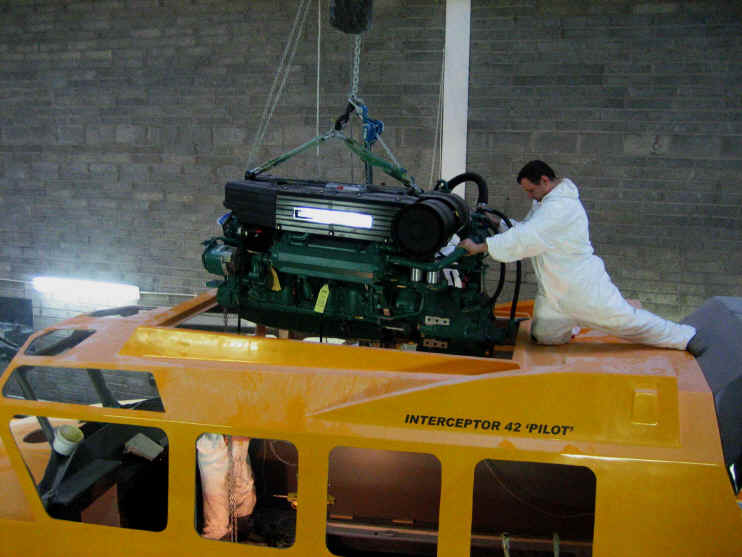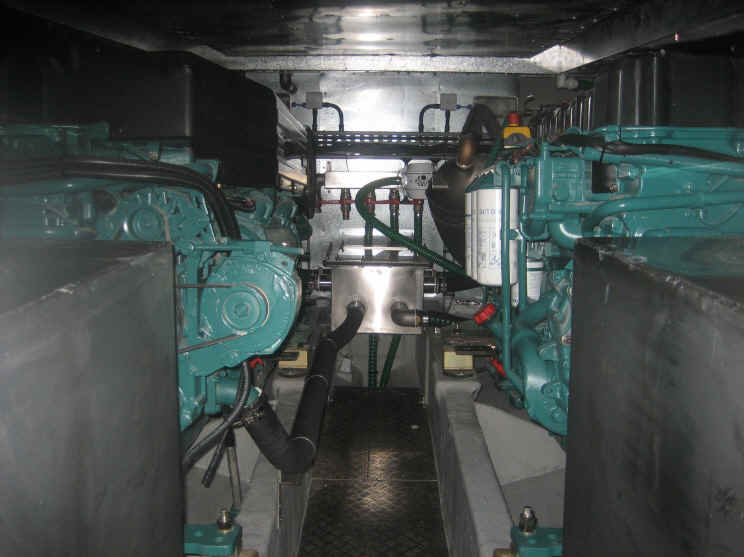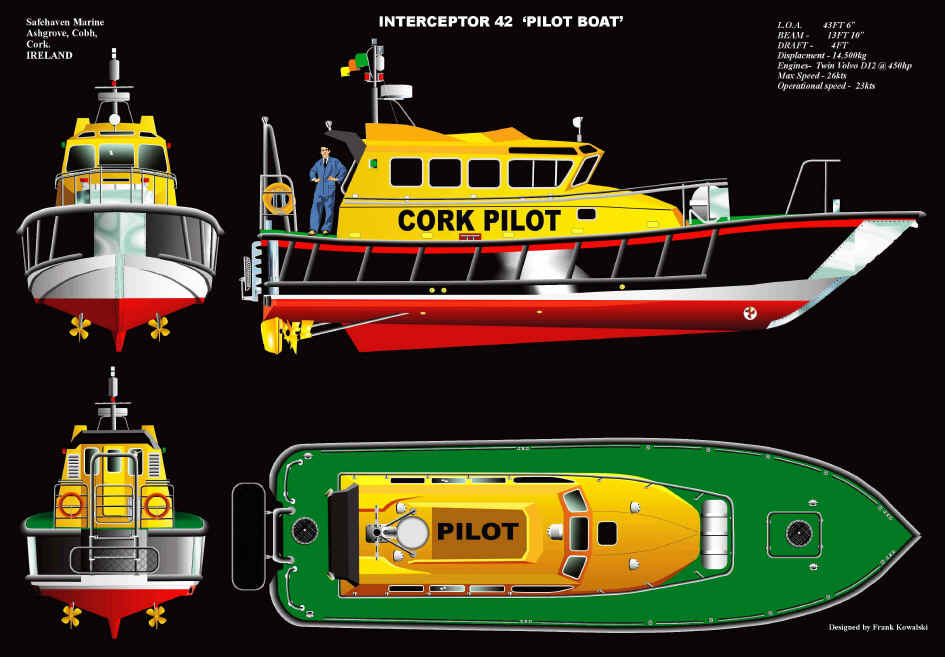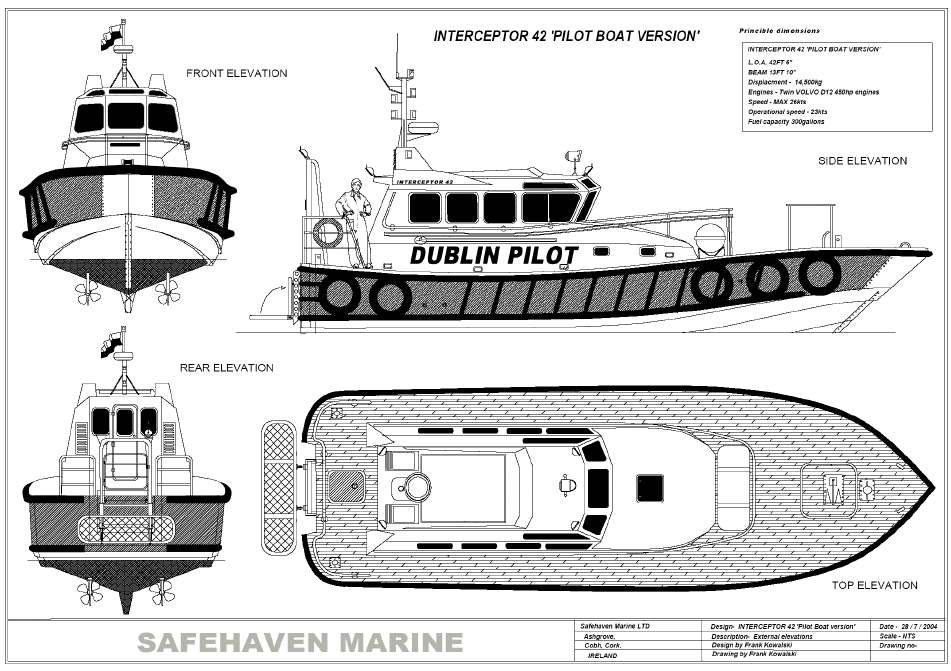
HOME
MODEL
RANGE CONTACT
US GALLERY
VIDEO
DOWNLOAD PRICE
LIST
SAFEHAVEN
MARINE. Builders of the Interceptor & Wildcat range of
offshore craft
Interceptor 42 'Pilot'
'Gleann
Mor' The ‘Interceptor Pilot 42’ for the
Port
of
Cork
SEE
THE ROUGH WEATHER SEAKEEPING VIDEO IN STORM FORCE 9
'Gleann Mor' The first of class
Interceptor ‘Pilot 42’ was launched on
Sunday the 23rd April 2006
. Based on the very successful Interceptor 42 hull, which has seen service as
class 6 passenger boats, work boats, dive boats and patrol boats, with over 20
craft now in operation throughout the
UK
, and
Europe
. The hull design is well proven and renowned for possessing excellent sea
keeping abilities. Her LOA is 43ft , beam 14ft. and draft 4ft 6”.
In summer 2005 the contract was
awarded to Safehaven Marine to build the new pilot boat for the
Port
of
Cork
. One of the main requirements of the
port
of
Corks
specification was for exceptional strength. To achieve this, substantial
150x150mm transverse frames @ 500mm centers on a 10,000gm2 shell laminate were
used. The same substantial beams were used on the deck structure and knees which
provides strength at the critical deck to hull join. The Ports specification on
strength of design was very specific and size for size the “Gleann Mor” is
one of the strongest pilot hulls available and most people get quite a shock
when the see inside her. The net result is that the likelihood of damage
occurring to her hull as a result of normal pilot boarding operations is
substantially reduced, meaning less down time, an important consideration for a
busy port like Cork Harbour. Her main fendering was provided by Technix Rubber,
consisting of 160mm heavy D section, with 140mm D section used for the lower
belting and the diagonals. This combination provides good protection to the
craft when alongside ships. On deck, a wide walkway, 32mm railings and Hadrian
safety rail facilitate safe passage. During the consultation process with the
Harbour Masters and Pilots at the design stage, the importance of a particularly
wide space at the pilot boarding area was stressed. This has been created by
tapering the fore cabin strongly towards the bow. The life raft is stored in an
easily accessible position on the fore deck, and is protected from boarding seas
by a mirror polished protection plate, incorporated into the forward railings.
Below, her graceful lines can be appreciated in
this photograph.
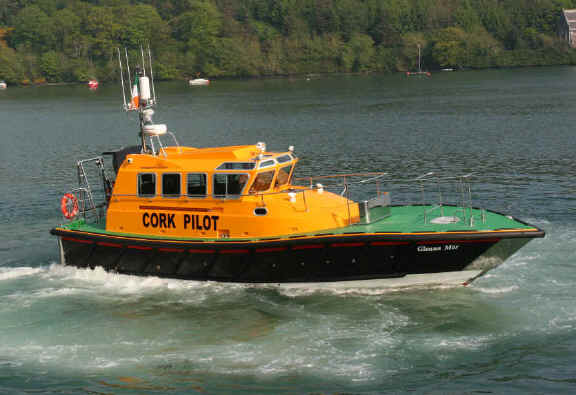
In the cabin, the arrangement chosen
by the
port
of
Cork
was for a central helm position. This means boarding can take place to the side
best suited to the prevailing conditions, as both port and starboard side
benefit from equal visibility. In addition the helmsman’s seating and steering
position has been designed with car like ergonomics in mind, allowing fatigue
free operation, where all controls fall easily to hand. Visibility is maximized
by the use of forward slopping front windows, to easily shed water and reduce
glare and reflections. Upper level skylights and roof windows give a clear view
overhead. Front screens are heated and in addition a hot air heater / demister
is fitted to ensure good visibility at all times. Instrumentation and
electronics have been positioned to provide easily viewed navigation and vessel
information. A comprehensive electronics package was provided by Dunmast and
consists of three Raymarine 12” E series screens, two at the helm position
providing GPS plotter navigation, sounder and radar, with a repeater positioned
at a second position. In addition, an AIS readout and rudder angle position
provides further information. The layout inside is quite unique. Instead of the
usual six pilot seats, (which can be accommodated if required) there are four
pilot seats, the aft two have a table in front, and one has a navigation console
with full E120 repeater and VHF incorporated. This provides the pilot with a
very comfortable seated position, his own navigation station and access to
important information, particularly in adverse weather conditions while
communicating with approaching vessels. Cameras positioned on the wheelhouse
roof and at the transom provide the helmsman with selectable video images
displayed on the E120 units, of both the pilot boarding overhead, and the
transom waterline area. The latter will be invaluable to the coxswain in the
event of an emergency recovery as normally the area directly below the transom
is not visible from the helm. In the event of a MOB situation arising, recovery
will be easily facilitated by a MOB recovery basket which is single handedly
deployed down to below the WL, allowing an unconscious person to be recovered
efficiently in a horizontal position and lifted up to the weather deck. When not
in use the system folds back into the transom out of the way.
The main cabin is finished in a
combination of durable grey laminates, black GRP moldings for helm and seat
pedestals, and the cabin is lined in a grey sidelining carpet, providing
insulation and a warm environment. Access to the forward accommodation is
through a water tight hatch, steps leads down to a spacious area containing
seating and occasional berths. There is also plenty of storage space, a galley
with a 24v hot water boiler providing hot water for the crew. A separate heads
compartment is situated to starboard.
The vessels electrical installation
was carried out by Marine Electrical Services, Gabriel Whitston has over 25yrs
in Electrical engineering in the Irish Navy and the resulting electrical
installation is to an exceptionally high standard. The main electrics are
contained in a dedicated, dry and sealed compartment. The Electronic
installation is mainly Raymarine equipment and was supplied through Dunmast. The
Engine compartment is accessed from the fore cabin through a water tight door,
with a clear walkway up between engines. All service components have been
positioned in an easily accessible manor and care has been taken to ensure an
amount of redundancy within the engine installation, an example being the raw
water supply, which uses a large stainless central filter box, feed from a total
of four individual seacocks, This was a port requirement from experience with
their other pilot vessels giving a redundancy factor that should up to three
become blocked, there will still be an adequate water supply to the engine.
Bilge pumping is by both mechanical, engine operated pumps and hand operated
pumps, in addition electrical pumps also serve the engine compartment.
She is powered by a pair of Volvo D12
engines rated at 450hp @ 1800rpm continuous. This provides her with a required
operational speed of 22kts on a 17,000 kg displacement, being cognizant of fuel
costs and efficiency. Another part of the
Port
of
Corks
specification was to provide a means of quick engine replacement in the event
of a failure. To this end a large hatch is built into the superstructure roof
which can be quickly removed, the four pilot seats can then be unbolted ant the
completed seating modules removed. A large hatch situated in the cabin sole is
unlatched and hinged back, allowing the engines to be quickly removed. Clements
engineering based in the UK have supplied all of Safehaven Marines stern gear
over the years and were instrumental in the vessel achieving her performance
through consultation and advice on optimum propeller size and sterngear.
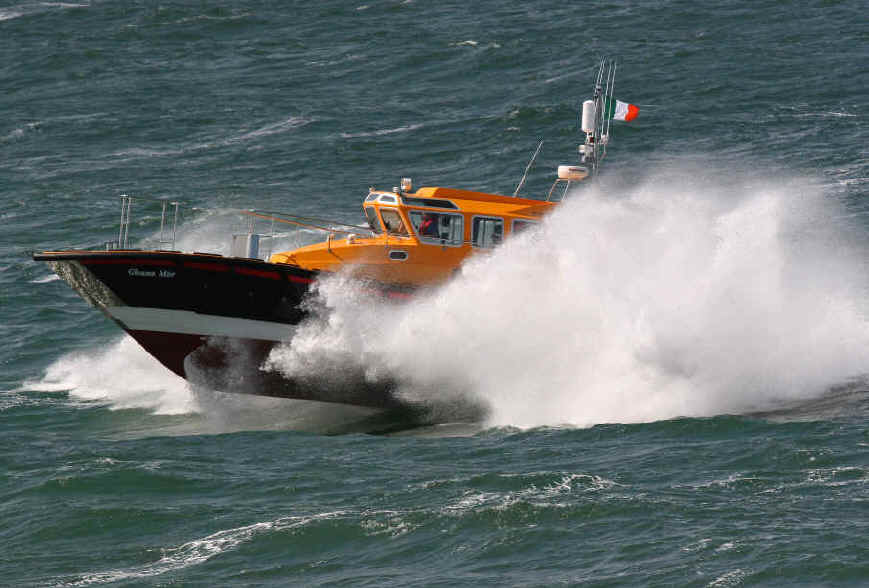
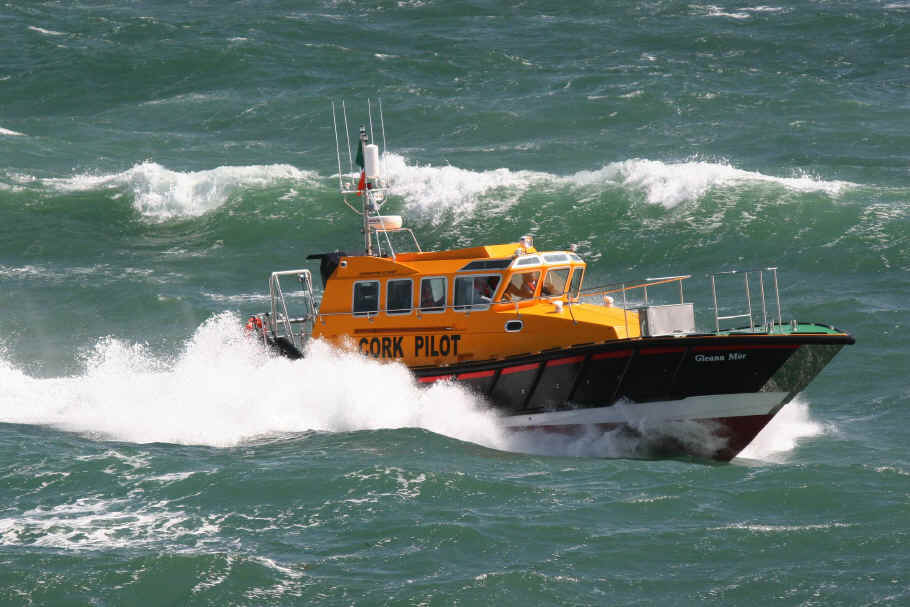
The first series of sea trials were
recently completed and her sea keeping was tested in severe weather conditions,
Storm Force 10, 60kts of wind and 10m seas with wind against tide at the
entrance to
Cork
Harbour
. Punching into steep head seas her behavior was as excellent. Her deep V hull,
weight and strength allowed her to punch through the waves almost silently with
no bangs or slams and even after being airborne her landings were very soft,
after shouldering the seas aside. The aft central con position and pilot seating
resulted in very low motions for the crew, providing comfort even in these
conditions. She was run her at various angles in to the seas. Beam on she was
excellent with very little rolling and heel and was able to withstand heavy
breaking seas striking her. Its worthwhile to note also that the screens
remained virtually dry throughout the test, her twin chine hull design
effectively suppressing airborne spray allowing good visibility to be
maintained, even in poor conditions. Turning to run before the seas she was
reassuringly controllable, allowing hands off steering in following seas,
running straight down wind displaying exceptional directional stability. Putting
the seas on the transom quarter, always a test for a boat, she was again very
steady, with little heeling on the face of waves when surfing and zero tendency
to yaw. In fact her stiffness and stability on this course was very impressive.
During ship boarding trials her
ability to easily come away from a ship provided great confidence to the
coxswain and crew; her deep V hull design creating a large wedge of water
between the two hulls, pushing her off easily by use of the wheel alone. She was
also very dry and stable when alongside. The
Port
of
Cork
will be carrying out extensive sea-trials with the Glean Mor over the coming
weeks and particularly in any adverse weather conditions.
The accompanying photographs clearly
distinguish the Interceptor Pilot 42, outlining the sleek and graceful lines and
colour scheme yet concealing the inner strength and design features so important
to a working vessel required for operations 24 hours a day in all weather
conditions.
The following dramatic
photographs are testimony to her seakeeping abilities. These pictures were taken
in a force 10 storm with 60kts of wing and 10m seas.
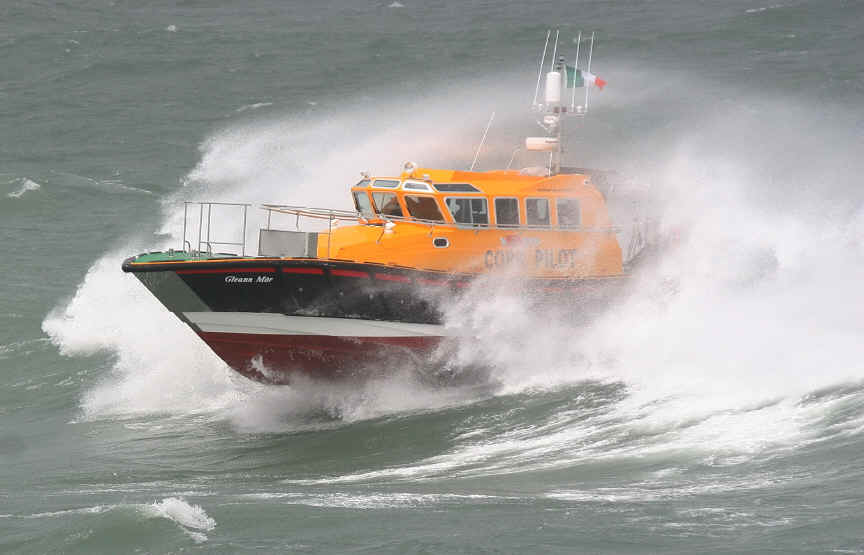
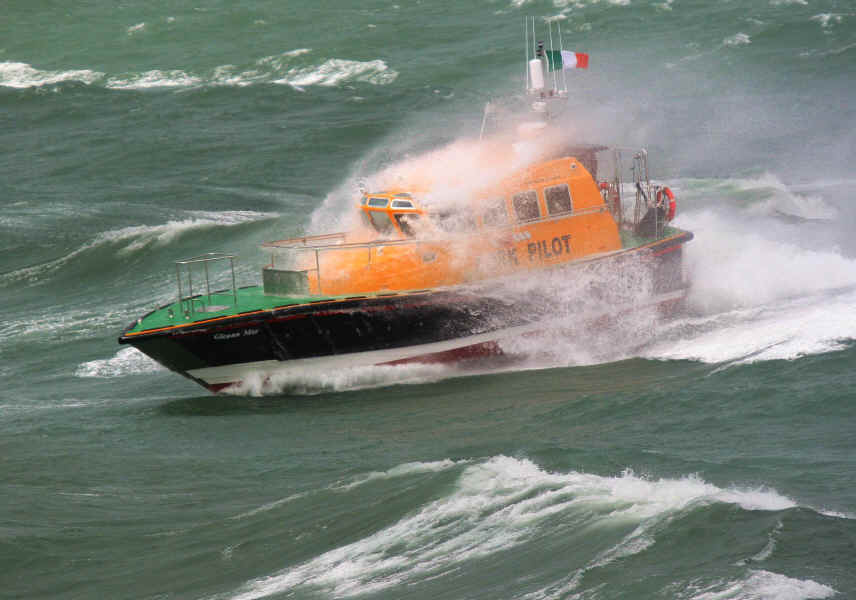
Cork Pilot boat in severe storm force 10,
70mph winds. Extreme conditions.
SEE
A VIDEO OF HER UNDERTAKING PILOT BOARDING'S IN STORM FORCE 10 & 10M SEAS
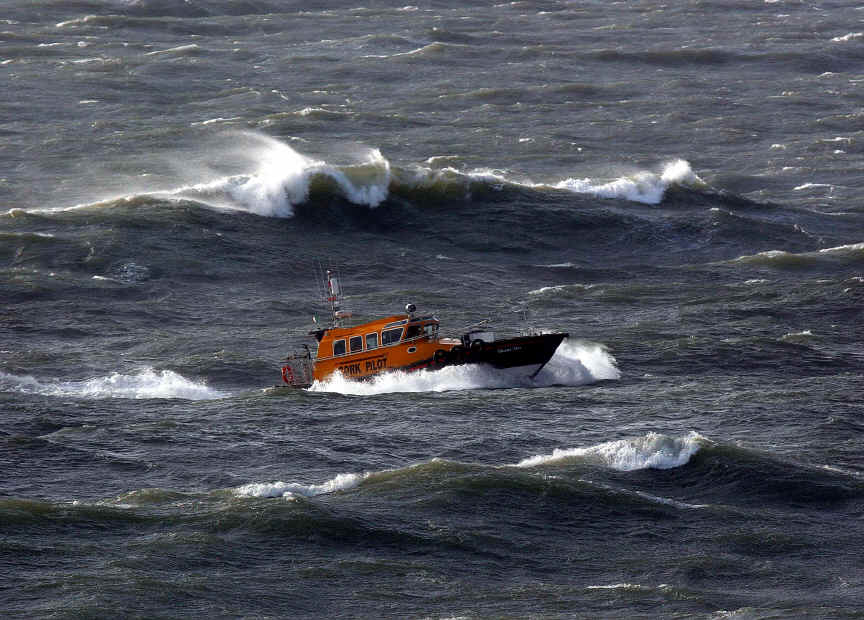
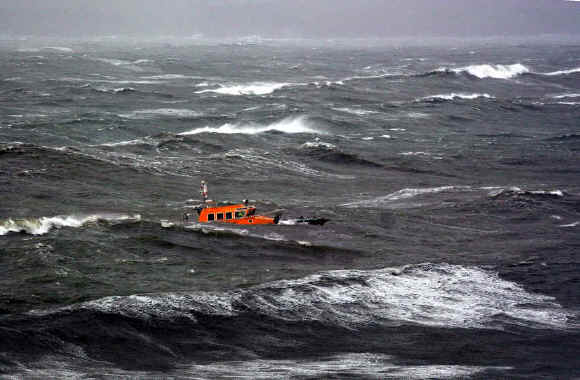
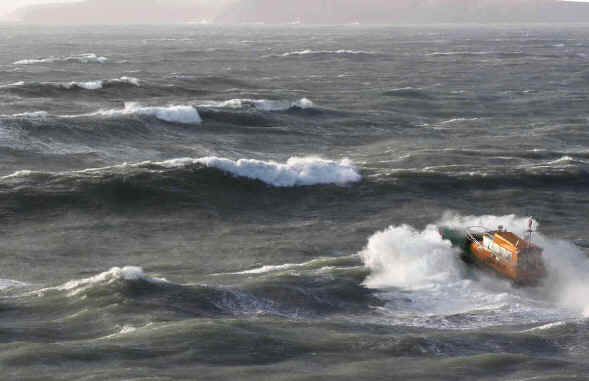
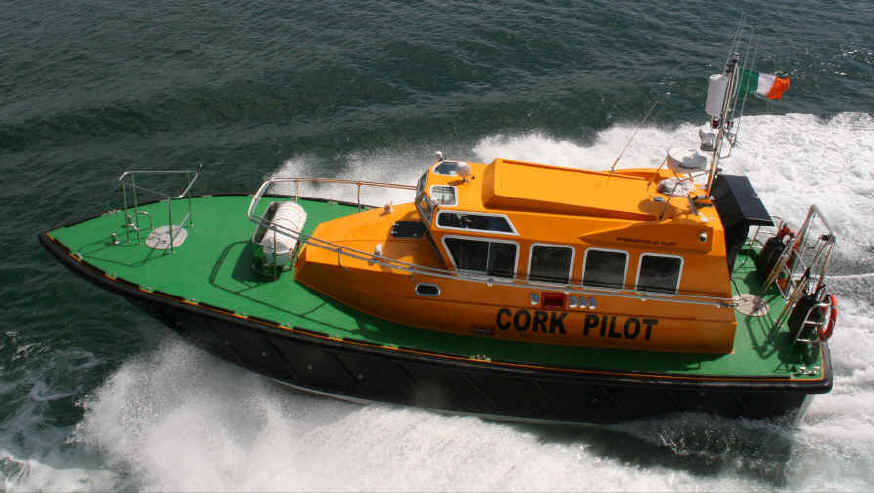
The sequence of pictures below show her coming
alongside a freighter during pilot boarding operations.
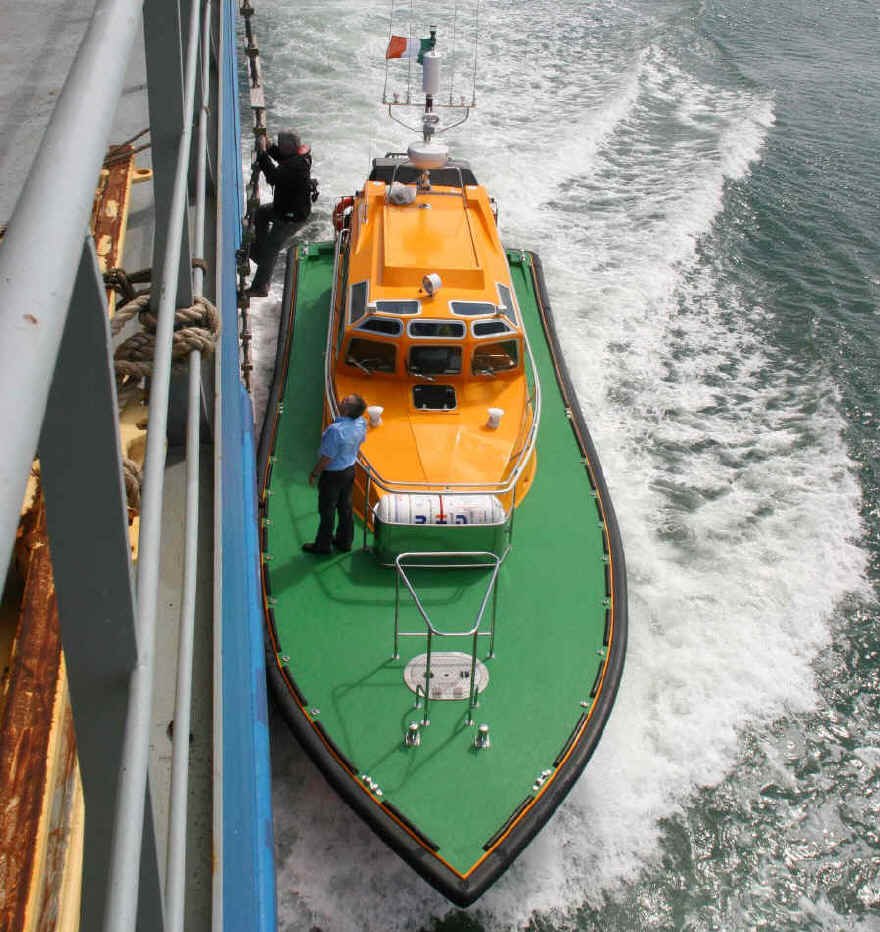
SEE
A VIDEO OF HER COMING ALONGSIDE SHIPS DURING BOARDING TRIALS
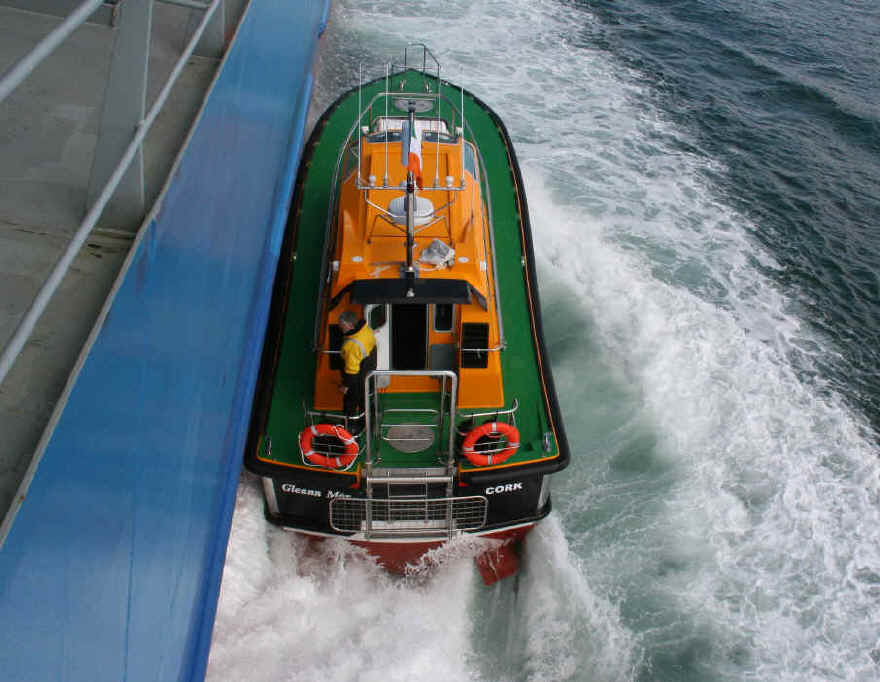
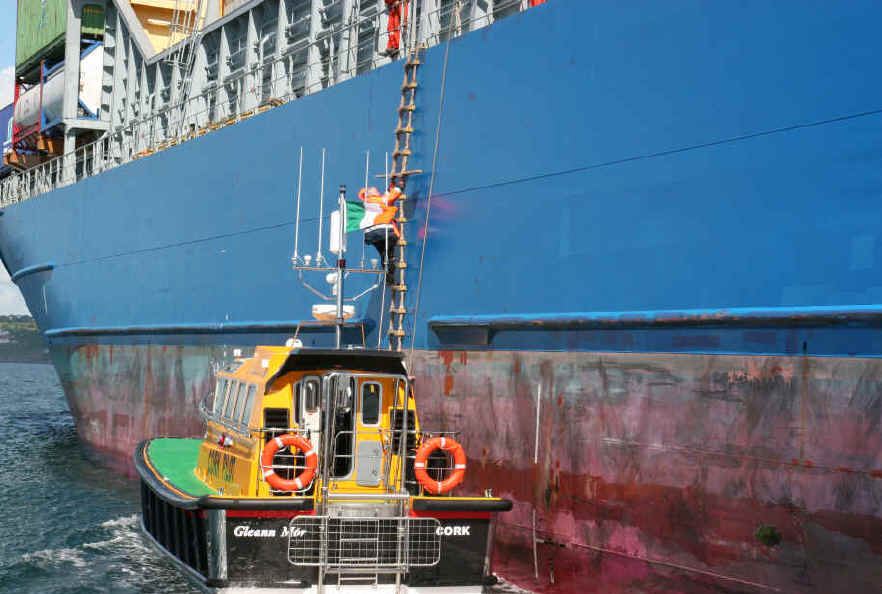
SEE
A VIDEO OF HER IN SERVICE UNDERTAKING PILOT TRANSFERS
Below, her interior is
bright and airy, fully lined and carpeted, she’s quite luxurious. The central
helm allows good all round visibility and the seat / steering interface is very
comfortable. Pilot seating is also very comfortable, two of which have tables
and one features a navigation console with VHF, GPS and radar repeaters. Several
vertical poles allow safe passage throughout the cabin in rough conditions



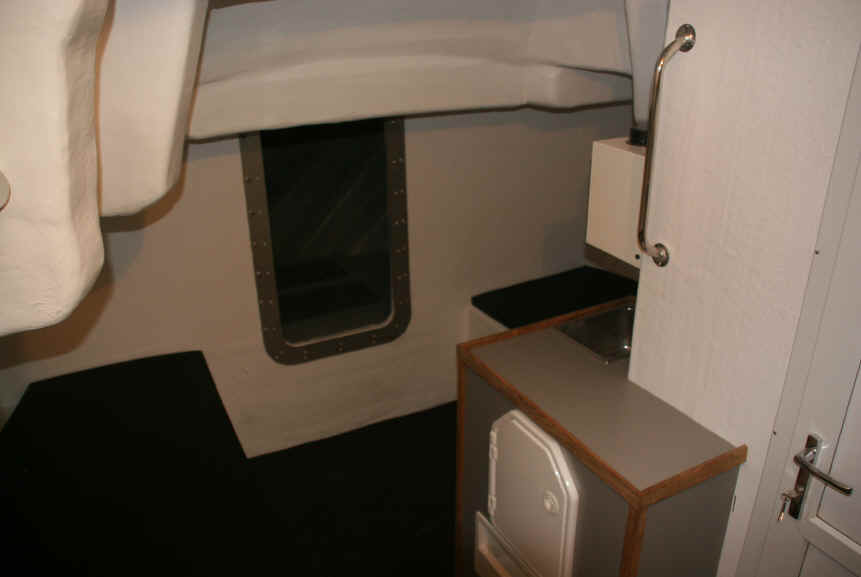
Below- Strength. The hulls scantlings are very closely
spaced @
500mm centres giving a 4300mm
panel width, the frames themselves are a huge 150 x 150mm (6" x 6") resulting in a
massively strong structure.
Below you can see the frames laminated in the hull.
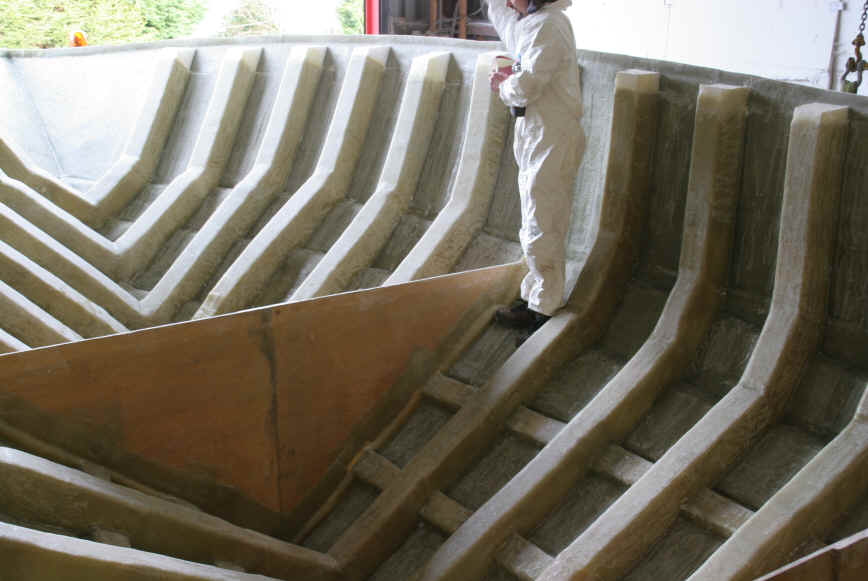
PAn essential design feature was the ability to
quickly and easily remove an engine, shown below.
